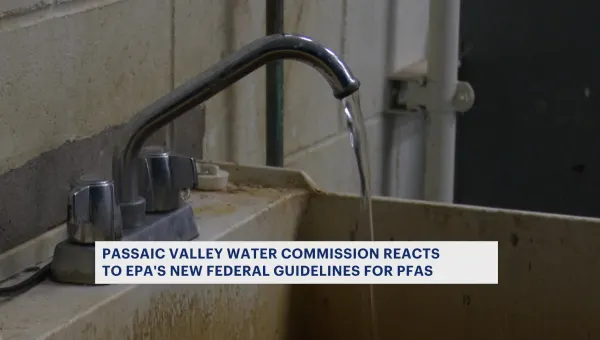How to protect yourself against frostbite during arctic chill
Doctors warn that the fingers, toes, ears and nose are most susceptible to frostbite in frigid temperatures.
News 12 Staff
•
Jan 15, 2022, 9:47 PM
•
Updated 91 days ago
Share:
More Stories
2:34

Guide: Safety tips to help prevent home burglaries
45ds ago1:31

What's Cooking: Uncle Giuseppe's Marketplace's prime rib roast
128ds ago2:19

Guide: Safety measures to help prevent fires and how to escape one
193ds ago2:36

Looking for a road trip? Check out Trap Door Escape Room in Red Bank
218ds ago3:05

Looking for a road trip? Check out the Silverball Arcade Museum in Asbury Park
253ds ago2:07

Tips on how to avoid confrontation with sharks while swimming in the ocean
277ds ago2:34

Guide: Safety tips to help prevent home burglaries
45ds ago1:31

What's Cooking: Uncle Giuseppe's Marketplace's prime rib roast
128ds ago2:19

Guide: Safety measures to help prevent fires and how to escape one
193ds ago2:36

Looking for a road trip? Check out Trap Door Escape Room in Red Bank
218ds ago3:05

Looking for a road trip? Check out the Silverball Arcade Museum in Asbury Park
253ds ago2:07

Tips on how to avoid confrontation with sharks while swimming in the ocean
277ds agoThe frigid temperatures this weekend throughout the Hudson Valley brings concerns of frostbite.
"Anything below 32 degrees because that’s where the water in your body can start to freeze as well. So if water freezes at 32 and the temperature is less than that, prolonged exposure, even in the high 20s, can cause frostbite," says Dr. Frank Winski, of the Westchester Medical Center.
Doctors warn that the fingers, toes, ears and nose are most susceptible to frostbite in frigid temperatures.
Those who expect to be out in the cold should look out for warning signs. Doctors categorize frostbite by varying degrees:
First-degree frostbite can make affected areas pale and itching with some swelling.
A second-degree case will result in skin blisters, filled with pale colored fluid.
Worsening frostbite cases can include blisters filled with dark-colored fluid and, at its worst, frostbite will result in tissue loss, with bones and tendons exposed.
Winski has some advice to avoid frostbite.
"Get out of the cold. If clothing is wet, either from children playing in the snow or from perspiration, remove the wet clothing, dry the wet areas, start warming the patient, and in a lot of times we like to use water that's a little bit warmer than body temperature to help re-warm those areas that have been damaged," he says.
Experts also advise to dress accordingly to reduce one's chances of experiencing frostbite.
MORE WINTER SAFETY GUIDES:
Interview with Dr. Frank Winski





